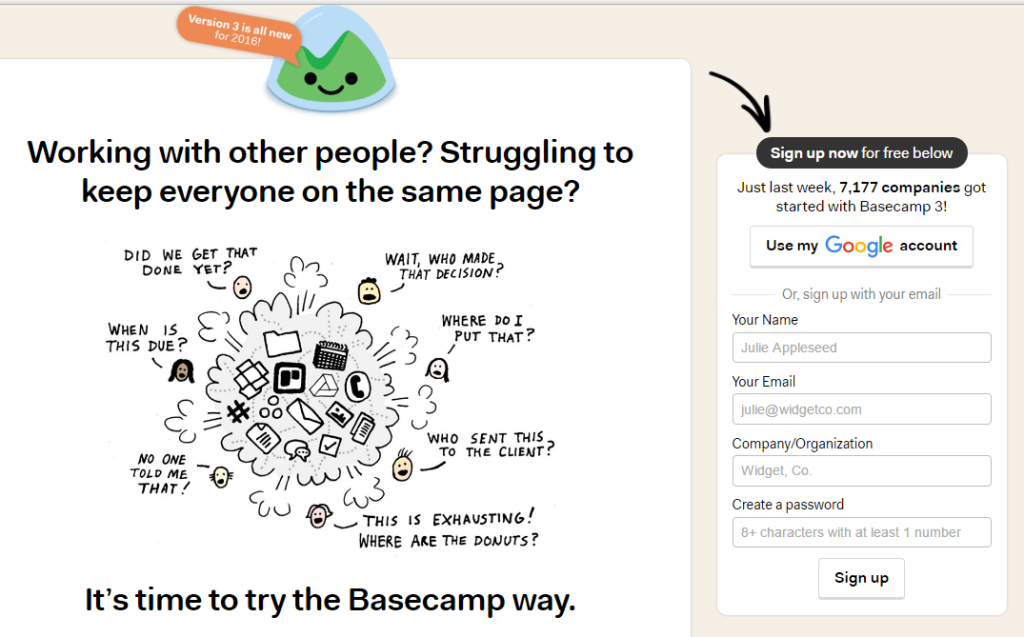
7 Digital Marketing “Rules” for Small Business Owners
One of the things that are so cool about digital marketing is that the little guys can compete with the big guys on a more equal footing. As long as you can get your brand “out there” in really effective ways, you can compete. Notice, however, that the key word here is “brand,” not product or service. Digital marketing caters to a new, smarter customer who can also move from business to business in a matter of clicks. The traditional forms of advertising no longer work, but that is a good thing for small businesses.
Here are seven “rules” that every small business marketing strategy should build upon.
1. Build a Site for Your Customers, Not for You
No one buys anything until they ultimately reach a website to make that purchase. If a small business is really effective in driving potential customers to its site, and then the experience is not good, no purchase will be made. Providing a great experience is a critical piece of marketing, and it means that your website has several elements:
- It has been designed for multiple devices – both PC and mobile. You do not know where your targets are coming from or how many devices they may be using in the product or service search, so be certain that they can traverse among devices cleanly. If they begin on your site on mobile and later switch to a PC to complete a purchase, make sure that their browsing history is transferred.
- Test your sites to be sure that they load fast, that navigation is easy and also fast
- Do not confuse the visitor with lots of clutter. Your site should be clean and sleek.
2.Pay Special Attention to Your Landing Page – Value and Benefit
Here’s the thing. A lot of businesses want to present their products and services front and center on their landing page. And that is a good thing. Visitors need to know what you offer. However, a big mistake is made if the focus is only on that product or service.
The focus must be on what the visitor gets out of this, not what you want to say about your offerings. Unless you focus on the value and benefit to the customer, you are not marketing correctly. Customers want to know how their lives will be better by your product or service. They can wait for product descriptions, which can be placed on other pages. Right now, you want them to stay because your product is going to solve a problem or makes their lives easier.
Take a look at the home page of Basecamp, a company that provides software solutions for project management.

The focus is entirely on the visitor and his/her typical pain points and problems when multiple people are working on a project. Any project manager can relate to this and see that there may be a benefit to exploring this product further. Plus, it’s humorous and will make a visitor smile.
3. Know Your Customer
You can’t just offer a product or service and not know who your target customer is. You may think you have a great site and content marketing strategy, but if you don’t know precisely who it is for, you will end up wasting time and money trying to throw your marketing efforts all over the place, where you customer is not, giving solutions to problems your customers may not even have, or vice versa.
- Develop a customer persona: make that customer real by giving him/her a name and a photograph. How old is s/he? Where might s/he work? What is his/her income level? How about education? Is s/he likely to be married, single or both? How about kids? Research the online behavior and buying habits of that person.
- Everything you design write or post is for that person you have defined; and everywhere you go to post/publish will be where that person goes, even down to the time of day that is best.
Knowing your customer inside and out takes time and effort. If you do it now, however, you will save a lot of time and energy in the long run. Broad marketing strokes are for companies like Coca-Cola. Your strokes are targeted and narrow.
4. It Really is All About Relationships
Relationships are built by conversation, connections, and by getting personal. You need to engage your target audience so that members of that audience want to participate in relationship-building with you.
- What types of humor do your target customer appreciate? If you have carefully developed your persona, you will know. Have occasional posts that are simply to entertain, not to inform.
- Feature your customers in your posts – people need to see “themselves” in your content
- Ask questions and post surveys – people like to give their opinions
- Hold contests – always a compelling activity
- Read comments and feedback that you get and respond immediately
- Personalize offers through emails. If someone is a loyal customer, email him/her directly, use his/her first name, and provide a coupon for a discount, just because it’s Monday and you appreciate him. Do it randomly, and your emails are far more likely to get opened.
Here’s the thing about great relationships. Customers get to know you as a “who,” not just a “what.” And when they have a good experience and a good relationship with you, they will share your brand with others. You build your online reputation by building relationships.
5. Limit Social Channels to Where Your Customers Are
Pick just a few social platforms for your presence. As a small business, you cannot be everywhere, but you can be in those places where most of your customers are. Facebook is a no-brainer. Not only can you post everything from featuring customers and your team to discounts and special offers, you can engage in conversations. No one does this better than ModCloth. They sell clothing to millennials females, and their conversation threads on Facebook are amazing – some go on forever. But someone from ModCloth is present and responding to every single comment. Here is just a partial thread on Facebook, over a single pair of shoes.
When you get customers conversing with you and with one another, your brand is spreading exponentially.
Depending on our customers’ demographic, they may be on Twitter, Instagram, Pinterest, Snapchat, etc. Start by picking the two most popular and stick to those. You want to be able to post often and regularly and you can’t do that with limited staff. And get a social monitoring tool so that you are notified whenever your brand is mentioned. You want to get there and find out what is being said so that you can respond. You never want a negative comment hanging out there without a comment that you will work to solve whatever the issue is.
6. Spend Marketing Money Wisely
Use the tools on social media platforms to place targeted ads on customer groups. These will show up in their feeds and on their walls, and are relatively inexpensive. Explore reciprocal arrangements with related niches to promote each other’s products or services. Use PPC opportunities – cheap and effective. Again, it’s a matter of budget and time. Do what you can on your own and contract out for additional help when you can.
7. Don’t Ignore SEO
If you are unsure about how to optimize your content for search engine rankings, spend the money and get someone who is. Organic searches are still a means by which lots of consumers look for information, products, and services. SEO is complex and takes time – keywords, backlinks, posting, guest posting, rich, fresh content, etc. – and search engine algorithms change constantly. And if you are small with limited staff, you really cannot do it all. Get the help you need – it will be worth the expense in the long run.
A small business can really compete with the big guys. It becomes a matter of time and sometimes money, of course, but if you develop a marketing plan that can grow as you do, target the right people/places, promote your value and benefit rather than your product, get personal, and engage your audience, you will see a solid, growing ROI.







Great article Luisa
I agree with your suggestion to use humour. Humour is a great way of showing some personality and connecting with your audience. It’s definitely helped me break the ice with some influential people in my niche. However it takes some skill to pull off.
There’s nothing worse than a badly judged joke!
Will be tweeting this.
This is the cardinal rule with marketing: choose the medium where your audience consumes information. If your target audience spends most time on Facebook, then you use facebook.